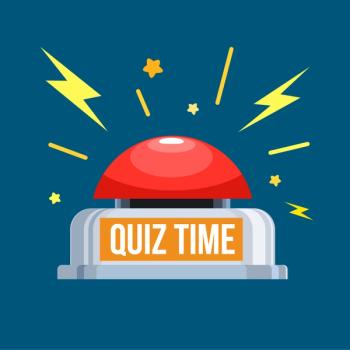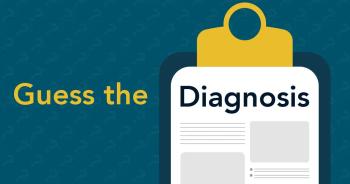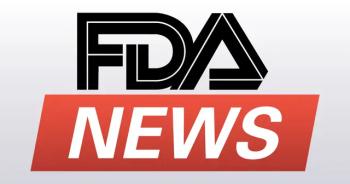
6 pitfalls to avoid in managing ADHD
Attention-deficit/hyperactivity disorder (ADHD) may affect a significant number of children in a pediatric practice. This article reviews diagnostic criteria, comorbidities, and complications of ADHD as well as pitfalls that confront the treating pediatrician.
Attention-deficit/hyperactivity disorder (ADHD) and its comorbid conditions represent a significant problem to the children in a pediatric practice. Pediatricians need to be not only cognizant of the diagnostic criteria, clinical mimics, comorbidities, and complications of ADHD, but also be comfortable with managing a whole host of complications and other issues, such as stimulant abuse and diversion, that can be very subtle. This article will review the diagnostic criteria for ADHD and discuss 6 pitfalls that may face the treating pediatrician.
Criteria of ADHD
As the pediatrician commonly experiences in practice, ADHD has 2 main types: inattentive and hyperactive.
The Diagnostic and Statistical Manual of Mental Disorders Fifth Edition (DSM-5)1 requires 6 or more symptoms of hyperactivity or inattention in children aged younger than 17 years and 5 or more in adolescents aged older than 17 years.
Whereas most pediatricians understand the diagnostic criteria, the DSM-5 expanded the age of symptom onset from prior to age 6 years to prior to age 12 years, in recognition of the later presentation of inattentive symptoms. Additionally, the DSM-5 also recognizes the presence of ADHD in adults, and requires 5 symptoms of the inattentive subtype or the hyperactive-impulsive subtype for diagnosis.
What many clinicians are not explicitly taught, however, is that the DSM-5 (and earlier editions) requires the critical diagnostic requirement that ADHD symptoms must be assessed at the “appropriate developmental age” and NOT the chronologic age.
Assessing a 7-year-old with a language age of a 4½-to-5-year-old (the lower end of the typical range) likely results in a diagnosis of ADHD because the child’s behaviors, attention, and activity level are inappropriate for a 7-year-old child. However, if these same symptoms are assessed at a 4½- to 5-year-old level, they may be much more appropriate.
Mistake #1 Starting medication too soon.
The American Academy of Pediatrics (AAP) guidelines for the diagnosis of ADHD were expanded to include children aged 4 to 5 years in 2011.2 However, 388,000 children aged 2 to 5 years have been diagnosed with ADHD despite there being no guidelines for a diagnosis before age 4 years.3
Although the pediatrician is well aware of the “terrible 2s,” not every child aged younger than 4 years with impulsivity, decreased attention span, tantrums, and high levels of activity goes on to develop ADHD. It is important for the pediatrician to remember the link between language age and behavior.
A 5-year-old child with a language delay who speaks at a 3-year-old level will generally have the attention span of a 3-year-old. It is the internal monologue that keeps our attention directed appropriately. This child may be challenged when trying to communicate his or her needs and resultantly acts out or has a tantrum in a similar fashion as a child with ADHD. However, this tantrum may be age appropriate for a 3-year-old. It is not chronological age but language age that is most important. Children are likely to function at the age of their language.
Diagnosing preschool-aged children with ADHD can be incredibly difficult. If the pediatrician decides a preschool-aged child has ADHD, behavior therapy is recommended as an initial therapy.2,4 However, the Centers for Disease Control and Prevention (CDC) estimates that fewer than half of children diagnosed with ADHD receive appropriate behavioral treatments.5
In children who do not meet diagnostic criteria for ADHD, it is reasonable to provide behavioral interventions.
Mistake #2: Not everything that is hyper is ADHD.
There is a saying in Pediatrics that all that wheezes is not asthma. Similarly, not all hyperactivity, impulsivity, or inattention is ADHD.
Several disorders have behavioral phenotypes with findings similar to ADHD:
· Extreme prematurity
· Fetal alcohol syndrome
· Spina bifida
· Genetic syndromes
· 22Q11 deletions (velocardiofacial (VCF) syndrome, DiGeorge syndrome)
Other conditions need to be considered when children present with symptoms of ADHD. Other medical conditions can cause similar symptoms, including:
· Learning disorders
· Speech disorders
· Brain injury
· Mood disorders, including depression and anxiety
· Other psychiatric or neurodevelopmental disorders
· Seizure disorders
· Sleep problems
· Thyroid problems
· Vision or hearing problems
Mistake #3: Dosing problems.
The pediatrician is faced with a number of issues in following patients with ADHD once they have been placed on medication. One common response from parents is “my child’s body got adjusted to it.”
The Multimodal Treatment of Attention-Deficit/Hyperactivity Disorder (MTA) study may provide some insight into this challenge.
The study included nearly 600 7-year-old to 9-year old children randomized to 1 of 4 treatment modes over a 14-month period:6
· Intensive medication management alone.
· Intensive behavioral treatment alone.
· Combination therapy.
· Routine community care (the control group).
The combined treatment and medication management groups showed significantly greater symptom improvement compared with the intensive behavioral treatment and community care. Compared with the community care arm, participants in the intervention groups receiving medication generally received higher doses of medication. The first effective dose was not always the most effective dose. Dosing in the intervention groups was as much as 50% higher than community-treated participants.6
Because children in community treatment only saw providers 2 to 3 times per year compared with monthly in the intervention groups, they may have been at risk for a “honeymoon effect” in which they initially responded to a low dose of medication, but then required a higher dose after a few weeks or months. Because of the nature of the intervention, this was more likely to be addressed.
Parents may also describe their child as “spacey” or “zombie-like” after starting ADHD treatment. This can be thought of as hyperfocus from a dose that is too high. In most instances, this is due to too high a dose and treatment should be reduced. If ADHD symptoms return, the pediatrician can consider a different stimulant or nonstimulant therapy.
The purpose of stimulants is to increase ability to focus on 1 item, not decrease hyperkinesis. Decreased hyperactivity is a frequent benefit but targeting hyperkinesis as a treatment goal is not appropriate and can lead to overdosing.
Unfortunately, it is often the teacher report that drives medication dosing, and the teacher-targeted behavior goal may not be attention but may be hyperactivity The stimulant medication should never alter the child’s personality.
Stimulants come from either methylphenidate or amphetamine categories. If a stimulant trial is not effective at an appropriate dose, then a medication from the other category is indicated. A failure to manage targeted attention issues in ADHD after trials at an appropriate dose of both a methylphenidate and an amphetamine product should raise a diagnostic concern. If the pediatrician finds the patient on multiple stimulants or treatments for ADHD, it is important to step back and rethink the diagnosis. Could the patient have a different diagnosis?
Mistake #4: Masked or coexistent mental health issues.
In children, the presentation of ADHD symptoms may also be the presenting symptoms of a mood disorder or a learning disability (LD) (after 3rd grade).
After beginning ADHD treatment in a patient, the pediatrician may be occasionally faced with a call from a parent stating that “my child has been crying every day since starting the stimulant medication!”
Whereas the prevalence of ADHD is estimated to be nearly 10%, childhood mood disorders are estimated to occur in 5% of the pediatric population. More than 7% of children have been diagnosed with anxiety and more than 3% have been diagnosed with depression.7 Among children with ADHD, 33% may have coexistent anxiety and 17% may have coexistent depression.3 While comorbid, if the mood issue is the primary diagnosis, a stimulant trial may exacerbate the presenting symptoms, resulting in the parent phone call.
The inability to understand/comprehend academic material can result in the child not paying attention or in acting out behavior (unconsciously, getting into trouble may be better than feeling academically inadequate as the classroom work demands are generally removed when the consequences for poor behavioral actions in the classroom are instituted).
All 3 conditions (ADHD, mood disorders, and LD) present with similar symptoms and can be comorbid. A high index of suspicion for a primary mood disorder should be maintained if there is a paradoxical response early in stimulant treatment.
The pediatrician must consider if the patient has another condition that needs treatment in addition to his/her ADHD. It is important to realize that even if the pediatrician feels there is a comorbid diagnosis, symptoms will often resolve with stimulant treatment. The addition of a second agent such as a selective serotonin reuptake inhibitor (SSRI) may be considered if monotherapy does not produce adequate symptom relief.2,8,9
Although stimulants are effective in treating ADHD, they can sometimes exacerbate a patient’s symptoms. It is important for the pediatrician to identify the timing of when emotional lability occurs. Stimulant-induced emotional lability may need to be treated by discontinuing or switching medicines. The pediatrician would expect this to occur as blood levels of the stimulant are peaking.9
Conversely, some patients may be actually experiencing “rebound irritability” as the stimulant blood levels begin to decline. This is an important distinction to make as this can be treated with adding a short-acting dose of medication as the morning dose begins to wane.9
Finally, inattentive ADHD is much more common in females and may present as depression in early/mid-adolescence when the ADHD results in academic struggles relative to peers. Until the DSM-5 age expansion of ADHD symptom presentation, these young women often were diagnosed with only a mood disorder, and the ADHD was never even considered.
Mistake #5: Failure to identify learning disabilities.
The pediatrician is likely to have heard one of the following from parents or caregivers: “She’s not a behavior problem at school, just lazy”; “The teacher said if she would just pay attention better, she could get it”; or “He just started to have problems with school-it must be this 3rd- (4th-) grade teacher!”
All these statements point to the significant overlap of ADHD with LD. In fact, 31% to 45% of children with ADHD have an LD.10 Girls with ADHD are nearly 10 times more likely to have a written-language disorder compared with girls without ADHD whereas boys are nearly 5 times as likely.11 When the LD presents itself will depend on the age when a child begins to struggle in the school system. Brighter children will compensate early and present later.
Learning disabilities are the most common chronic condition in most pediatric practices. One area of concern is that 2 in 5 pediatricians do not feel that identifying LDs is their responsibility.12 In fact, periodic surveys of membership conducted in 2004 and 2013 by the AAP demonstrated that fewer pediatricians (62% vs 51%) were screening for learning disabilities in their practice, but the percentage treating or comanaging LDs increased (8% vs 18%).13 If the pediatrician fails to identify at least the need for referral for LD, screening many children may go undetected until school issues develop.
Mistake #6: Misuse, abuse, and diversion.
The pediatrician may also occasionally encounter patients or parents asking to be switched from long-acting to short-acting formulations or frequently running out of medication. The pediatrician needs to begin by asking why.
Reports of the misuse of stimulants have been increasing for some time.14 Estimates of misuse (use of ADHD medication not prescribed to an individual or taking differently than prescribed) among grade and high school students range from 5% to 9%, and from 5% to 35% for college students. Estimates of diversion (selling, trading, or giving medication to a person without a prescription) occurred in 16% of grade school and high school students and 23% of college students. High school students reported giving ADHD medications away (15%), selling (7%), or having their medications stolen (4%). Among college students with a prescription for ADHD medication, 30% reported selling their medication and more than 50% said they were approached by another student to give or sell their medication.15
Reasons for misuse vary by age. In grade school and high school students, the primary motivation is generally social and recreational where- as improving cognitive performance is the main factor for college-aged students. Among all children misusing stimulants, the most common source is friends and family members followed by physicians.14,15
Parents also have been noted to divert ADHD for themselves or another family member. In 1 study, 16% of parents admitted to self-administering their child’s medication and 13% had considered it.16 This is not commonly diagnosed, but parents may see a benefit to self-administering their child’s medication for their own use as there can be a high rate of undiagnosed ADHD in parents of children with ADHD.
If there is a suspicion that a parent is also manifesting adult ADHD, a recommendation to discuss the symptoms with the parent’s primary care provider is not only appropriate, but good medical care. If the parent’s ADHD is managed, the child’s outcome can be improved.
Pediatricians need to emphasize to their patients that it is inappropriate and illegal to share, sell, or distribute their stimulant medication. The pediatric office should have clear procedures and policies about refills and what to do if medication is lost or stolen. Parents and patients need to be educated about the importance of safe storage and what to do if they are pressured into sharing their medication with someone else.
Likewise, the pediatrician should consider use of long-acting formulations as these have less potential for abuse compared with the short-acting formulations. Finally, the pediatrician needs to be aware that some parents and patients may seek a diagnosis of ADHD in order to obtain a stimulant prescription. In fact, adults are highly successful in obtaining stimulant medication when coached about ADHD symptoms.17
Conclusion
Attention-deficit/hyperactivity disorder and its comorbid conditions represent a significant problem to the children in a pediatric practice. Pediatricians need to be not only cognizant of the diagnostic criteria, comorbidities, and complications of ADHD, but also comfortable with addressing other issues such as stimulant abuse and diversion.
References:
1. American Psychiatric Association. Diagnostic and Statistical Manual of Mental Disorders, Fifth Edition (DSM-5). Washington, DC: American Psychiatric Association Publishing; 2013.
2. Subcommittee on Attention-Deficit/Hyperactivity Disorder, Steering Committee on Quality Improvement and Management; Wolraich M, Brown L, Brown RT, et al. ADHD: clinical practice guideline for the diagnosis, evaluation, and treatment of attention-deficit/hyperactivity disorder in children and adolescents. Pediatrics. 2011;128(5):1007-1022.
3. Centers for Disease Control and Prevention. Attention-deficit/hyperactivity disorder (ADHD). Data and statistics about ADHD. Available at:
4. Feldman ME, Charach A, Bélanger SA. ADHD in children and youth: part 2-treatment [article in English and French]. Paediatr Child Health. 2018;23(7):462-472.
5. Danielson ML, Bitsko RH, Ghandour RM, Holbrook JR, Kogan MD, Blumberg SJ. Prevalence of parent-reported ADHD diagnosis and associated treatment among US children and adolescents, 2016. J Clin Child Adolesc Psychol. 2018;47(2):199-212.
6. A 14-month randomized clinical trial of treatment strategies for attention-deficit/hyperactivity disorder. The MTA Cooperative Group. Multimodal Treatment Study of Children with ADHD. Arch Gen Psychiatry. 1999;56(12):1073-1086.
7. Centers for Disease Control and Prevention (CDC). Children’s mental health. Data and statistics on children’s mental health. Available at:
8. Pliszka SR, Crismon ML, Hughes CW, et al; Texas Consensus Conference Panel on Pharmacotherapy of Childhood Attention-Deficit/Hyperactivity Disorder. The Texas Children’s Medication Algorithm Project: revision of the algorithm for pharmacotherapy of attention-deficit/hyperactivity disorder. J Am Acad Child Adolesc Psychiatry. 2006;45(6):642-657.
9. Posner J, Kass E, Hulvershorn L. Using stimulants to treat ADHD-related emotional lability. Curr Psychiatry Rep. 2014;16(10):478.
10. DuPaul GJ, Gormley MJ, Laracy SD. Comorbidity of LD and ADHD: implica-tions of DSM-5 for assessment and treatment. J Learn Disabil. 2013;46(1):43-51.
11. Yoshimasu K, Barbaresi WJ, Colligan RC, et al. Written-language disorder among children with and without ADHD in a population-based birth cohort. Pediatrics. 2011;128(3):e605-e612.
12. Stein RE, Horwitz SM, Storfer-Isser A, Heneghan A, Olson L, Hoagwood KE. Do pediatricians think they are responsible for identification and management of child mental health problems? Results of the AAP periodic survey. Ambul Pediatr. 2008;8(1):11-17.
13. Stein RE, Storfer-Isser A, Kerker BD, et al. Beyond ADHD: how well are we doing? Acad Pediatr. 2016;16(2):115-121.
14. Lakhan SE, Kirchgessner A. Prescription stimulants in individuals with and without attention-deficit/hyperactivity disorder: misuse, cognitive impact, and adverse effects. Brain Behav. 2012;2(5):661-677.
15. Wilens TE, Adler LA, Adams J, et al. Misuse and diversion of stimulants pre-scribed for ADHD: a systematic review of the literature. J Am Acad Child Adolesc Psychiatry. 2008;47(1):21-31.
16. Pham T, Milanaik R, Kaplan A, Papaioannou H, Adesman A. Household diversion of prescription stimulants: medication misuse by parents of children with attention-deficit/hyperactivity disorder. J Child Adolesc Psychopharmacol. 2017;27(8):741-746.
17. Edmundson M, Berry DTR, Combs HL, et al. The effects of symptom information coaching on the feigning of adult ADHD. Psychol Assess. 2017;29(12):1429-1436.
Newsletter
Access practical, evidence-based guidance to support better care for our youngest patients. Join our email list for the latest clinical updates.













